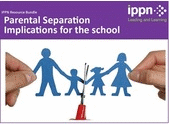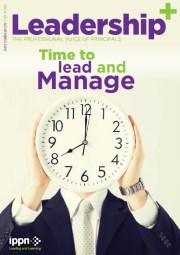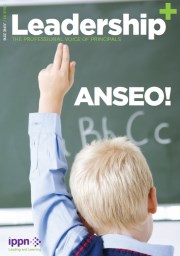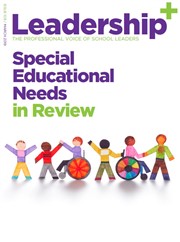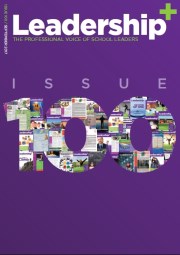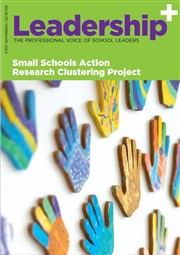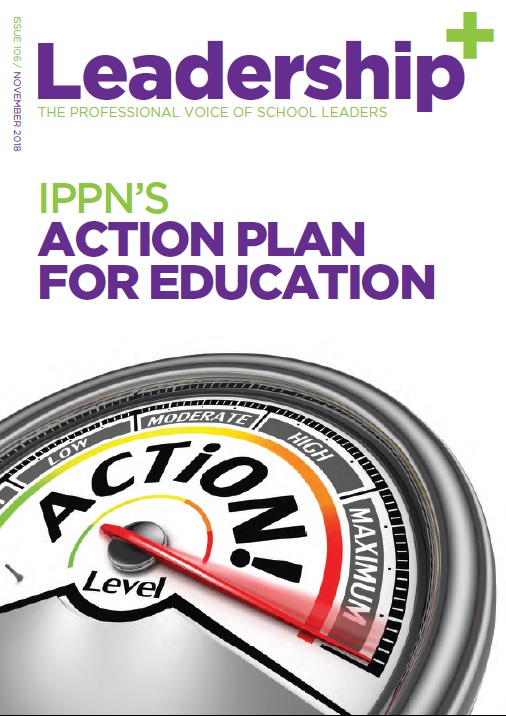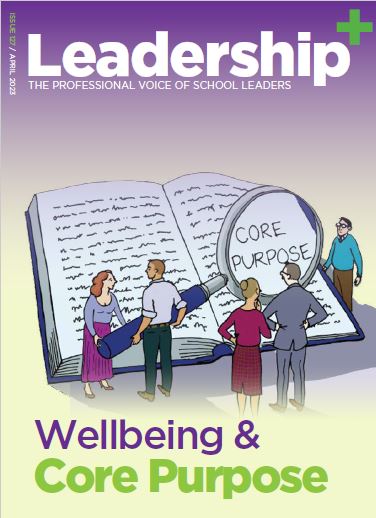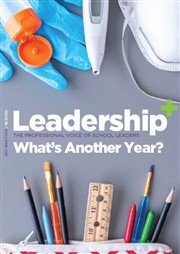Contract of Employment for SNAs
- Published: 05 September 2005
The following are extracts from DES Circular Primary 15/05 entitled
Contact of Employment for Specila Needs Assitants.
New Appointments
The revised contract has regard to the fact that all newly approved Special Needs Assistant posts are related to the special needs of one or more pupils in respect of whom the posts are sanctioned, and may be utilised by the school having regard to the needs of those pupils and the duties of the post. The practice of issuing child specific contracts should cease with immediate effect.
Existing Staff
Special Needs Assistants already in service on child specific contracts and whose employment is continuing for the next school year should be offered the option of transferring to the revised contract or remaining on their existing contract. The option of transferring to the revised contract is a once-off option and must be exercised on or before 30th September 2005. Those Special Needs Assistants who exercise the option of transferring to the revised contract will have their approved service as a Special Needs Assistant in the school reckoned for seniority purposes. Those Special Needs Assistants who do not exercise the option on or before 30th September 2005 will remain on their child specific contract and their future employment will continue to be dependent on the assessed needs of the child specified in the contract.
Review of Allocation
The allocation of special needs assistant posts to your school will be reviewed on an annual basis. The employment of Special Needs Assistants may be reduced from full-time to part-time or terminated by way of redundancy where the allocation is reduced. The selection criteria for redundancy will be on a last-in first out (LIFO) basis in accordance with the agreement reached with the representatives of the grade concerned subject to the contractual arrangements already in place in the school. This means that, in the case of redundancy, unless the most junior SNA in the school has a written child specific contract that entitles her/him to remain in the school, her/his contract should be terminated on the basis that she/he is the most junior SNA in the school in terms of length of service.
Related documents
![]() Contract of Employment for SNAs -Cir 15/05 (MS Word, 33k)
Contract of Employment for SNAs -Cir 15/05 (MS Word, 33k)
DES has sent a Circular to all schools in relation to school-based Contracts of Employment for SNAs.These contracts must be used for all new SNA appointments. It outlines the procedure for offering new contracts to existing SNAs with child specific contracts.
![]() Sample Contract of Employment for SNA (MS Word, 44k)
Sample Contract of Employment for SNA (MS Word, 44k)
Sample Contract of Employment
Teachers' Duty of Care
- Published: 16 August 2005
Click here to access the Teachers' Duty of Care notes on the Oasis website (website by the Government for Information on Public Services).
Click here to access all articles on Primary Education on the Oasis website
Hanafin concerned over lack of male primary teachers
- Published: 16 August 2005
MORE male students must be encouraged to enter the teaching profession to avoid a gender imbalance at primary schools across the country, Education Minister Mary Hanafin said yesterday.
Ms Hanafin raised concerns as two out of every five primary schools in the country have no male teachers and many others have just one male teacher.
"I am concerned about the fact that the teaching profession is becoming completely feminised on the basis that I don't think any profession should be just one gender or the other," she said.
"There are about 4,500 students that have applied to do primary school teaching and they are waiting for their Leaving Certificate results this year, but of that, only 781 of them are boys."
Ms Hanafin said she would be acting over evidence career guidance teachers at secondary schools were more likely to recommend teaching as a profession to female rather than male students.
"Any work setting where it is all one gender can be intimidating for
the minority, and two in every five schools in the country have no male
teacher at all and many of the others just have one male teacher.
"Now that is not a healthy situation in any profession," she said.
Ms Hanafin said the starting salary for a primary school teacher with an honours degree, at almost €34,000, would rival the starting salaries of engineers, architects and other professions.
"The timescale for reaching the top of the scale is quite long but, on the other hand, people would say that in teaching, you have a greater work-life balance, that you have longer holidays, and you have an opportunity to teach anywhere in Ireland," Ms Hanafin told RTÉ Radio.
She said she was awaiting a report from an expert group on the issue of men in teaching before launching a campaign to encourage more males into the profession.
Click here to access the article on the Irish Examiner websiteCost-cutting scandal of our school buses
- Published: 11 August 2005
Secret memos show money, not safety, the main reason for delays in introduction of seat belts
THE Government put costs before safety on school buses for years, startling new documents reveal.
And thousands of pupils will go back to school next month on overcrowded vehicles as promised new buses won't be ready.
Documents seen by the Irish Independent confirm the Department of Education and Science was pushing for massive cutbacks in the school bus system before the Navan tragedy last May.
They show costs, and not safety, were the main reason for delays in the introduction of seat belts before now.
Officials saw no need to introduce safety belts or change the controversial 3-for-2 rule (three pupils for two seats) even though they acknowledged 11 students had been killed on buses in the previous decade.
That was prior to the Navan school bus tragedy in which a further five teenage girls were killed.
Since then Education Minister Mary Hanafin and junior minister Sile de Valera have announced the 3-for-2 rule is being phased out.
However, it was learned separately last night that when schools re-open in three weeks time, thousand of post-primary pupils will still be seated on a 3-for-2 basis as additional buses will not be available in time.
The documents, released under the Freedom of Information Act, show that as far back as 2002, officials were devising ways of trying to cut costs on the school transport system.
They proposed:
- Charging primary school students.
- Increasing the cost of school bus tickets by up to 30pc.
- Getting rid of free tickets for children of medical card holders.
- Reducing some special needs services and ending others.
The documents also show Bus Eireann tested a new state-of-the-art bus in schools in Navan with a host of safety features, including seat belts and a seat for every child, just four weeks before the tragedy.
Since 2002, department officials had been debating ways of reducing costs and increasing revenue to pay for the system.
They warned of huge cost overruns with school transport due to increasing contractor costs, improvements to services for special needs pupils and escorts, minor improvement to mainstream services and the increase of all-Irish and multi-denominational schools.
In a document headed 'Proposals to Reduce Expenditure for 2004' officials proposed cost savings of almost €10m.
These included withdrawing escorts and transport grants from special needs students.
In other documents, officials proposed introducing a €20-per-term charge for primary school students, and increasing the cost of tickets by 20pc to 30pc for second level school students.
Getting rid of the medical card exemption would raise about €1.8m, they noted.
They also proposed stopping buses for special needs students in July and August to save €300,000.
The documents reveal that costs for the school bus scheme were rocketing while fewer students were being served.
A note prepared by senior officials for the Taoiseach in May this year showed that 160,000 students were carried on school buses in 1997 at a cost of just €49.5m. However, this year an estimated 138,000 students would be carried at a cost of more than €116.5m.
Services for 8,500 special needs students were costing about €35m annually. This represented 30pc of the overall budget for just 6pc of the students.
In a note for Education Minister Mary Hanafin following the Navan tragedy, senior officials told her they were considering options to phase out the three-for-two seating arrangement.
In an internal memo marked 'Safety Issues' sent on August 20, 2003, officials noted that the probability of a fatal accident was 120,000 times lower in a bus than in other forms of transport.
However, the memo warned there was "some evidence that the vicinity of a school bus which is picking up and dropping off school children poses particular risk for the children".
The memo said an extra 880 buses would be required at a cost of €57m to phase out the three-for-two seats exemption. A further €15m would be needed for drivers wages.
Retro-fitting seat belts on old buses would cost about €38,000 per bus.
Repainting buses bright colours and installing new flashing warning lights would cost €6.9m.
Currently there are 652 buses in the Bus Eireann school bus fleet, with 2,380 private buses contracted to provide services through the school year.
The average age of a Bus Eireann school bus is 16 years.
Bus Eireann has begun the process of getting 130 extra large buses - 50 for next term - while an additional 250 minibuses are due to be hired from the private sector.
The company could not say last night how many extra buses would be available on the day the schools re-opened.
Click here to access the article on the Irish Independent website - www.unison.ie
Gifted Pupils 'under achieving'
- Published: 09 August 2005
Research by Glasgow University suggests gifted pupils need support in a similar way to other special needs groups.
Teachers are unable to focus on them because they are constrained by the curriculum and targets, according to the co-author of the research.
Margaret Sutherland said teachers also needed to question their assumptions about what constitutes "intelligent".
The research was based on literature on early years learning and investigations into how Scottish and English children labelled as "gifted" viewed their experiences of learning.
Many appeared to have a more negative attitude to learning than their peers.
'Not safe' to fail
Gifted pupils were not allowed to fail, according to Mrs Sutherland, and this had both academic and emotional consequences.
"Teachers and the curriculum need to be more creative to incorporate these children," she said.
"But teachers aren't allowed to fail either and are scared to try things out.
"I've known young people who have never been allowed to make mistakes, and when they do get something wrong, they cannot cope," she added.
She said failure was a part of learning.
"Being clever is not innate and a fixed state. If a child fails at one thing, he or she can of course still be clever.
"And to be constantly told that you have done well means these children are not challenged and many switch off to learning at school and fail to fulfil their potential, despite being bright," she said.
Margaret Sutherland and Christina Smith, authors of the research, also found teachers tended to assume that gifted pupils would succeed with or without support with difficult tasks, and children labelled gifted might struggle while teachers spent more time with those thought less able.
Mrs Sutherland said the focus should be on providing a variety of opportunities to pupils, then noting who shone through and showed potential. This would challenge all children.
Therefore education should be focused on the needs of the child and have a more inclusive approach.
But the traditional method of dealing with gifted children tended to label them then see how they could fit into the existing system, she said.
Christina Smith said the parallels with special needs children were evident, and that the method of dealing with them had not worked.
"What we are saying is that targets could be met anyway by a more inclusive and creative approach."
Focus on provision
The government says its forthcoming White Paper will include plans to stretch the most able pupils, and that schools should tailor teaching to meet their needs.
The National Academy for Gifted and Talented Youth was set up in 2002 to focus on provision for those at the very top of the spectrum - the top 5%.
It now has just under 70,000 members, from every local authority in England.
Head of the Student Academy, Ken Sloan, said gifted and talented pupils were a group which required investment and support.
"We know that a young person identified as gifted will not necessarily fulfil their potential if they aren't given the right support and opportunities."
He said Ofsted had identified schools with excellent provision, but across the country it was generally patchy.
But the increasing amount of schools with members of the academy suggested schools were giving more attention to the needs of gifted and talented pupils, he added.
Click here to access the article on the BBC News website www.news.bbc.co.uk





